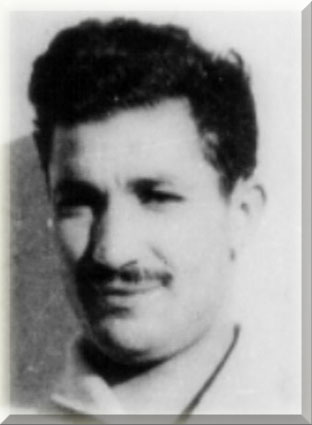PRESENTATION OF THE M’HAMED BOUGARA UNIVERSITY OF BOUMERDES

The M'Hamed BOUGARA University of Boumerdes was established in 1998 by the Executive Decree No. 98-189 of 2 June 1998 on the basis of the grouping of six (6) National Institutes whose creation dates back to the 1960s, 1970s and 1980s (National Institute of Hydrocarbons and Chemistry (INHC), National Institute of Electrical and Electronic Engineering (INELEC), National Institute of Mechanical Engineering (INGM), National Institute of Building Materials (INMC), National Institute of Manufacturing Industries (INIM) and National Institute of Food Industries (INIA).
In addition to courses inherited from these former national institutes, the University has since its creation opened up other courses in Science and Technology, Nature and Life Sciences, Economics and Management Sciences, Commercial Sciences, Law and Language and Foreign Literatures in the classical system.
The LMD system, introduced since the academic year 2004/2005, has nine (9) study fields (ST, SM, MI, SNV, LLE, SEGC, LLA, DSP and STAPS). Each field includes at least one channel branch.
In the field of higher education, the university’s mission is : The training of the necessary managers for the economic, social and cultural development of the country.
The introduction of students to research methods and the promotion of training by and for research.
The contribution to the production and widespread dissemination of knowledge , to their acquisition and development.
A Message from the Rector
![]()
El Chahid M’Hamed Bougara

Colonel Si M’hamed Bougara, whose real name is Ahmed Ben Larbi Bougara, nicknamed Si M’Hamed, was born on December 2, 1928, in Khemis-Miliana, in the wilaya of Ain-Defla. Coming from an average conservative family.
He completed his primary studies at the French school, learned the Koran and the principles of the Muslim religion, and in 1946 went to Tunis to continue his studies at the Zitouna mosque.
He learned the trade of electric welder and worked at the piping plant and then at the Railway Company in Khemis Miliana. He was also employed as a steward at the vocational training center in Blida and then in Algiers.
The Algerian Muslim Scouts were the initial framework in which he began his nationalist activity. He adhered to it when he was only 16 years old. In 1946, he joined the PPA (Algerian People's Party) and then the Movement for the Triumph of Democratic Freedoms.
He was imprisoned twice by the French authorities: the first time on 8 May 1945 for his active participation in the demonstrations of 8 May 45 and the second time in 1950.
He went on to fight underground, realizing through patriotism that the armed revolution was the only way for the people to wrest their freedom. He then began to organize resistance in Jebel Amrouna and Theniet el Had as well as in other regions.
As soon as the first spark of the 1st November Revolution was triggered, he had to exercise various responsibilities since he was promoted to the rank of political assistant in 1955 and then in charge of communication between Algiers and its surroundings.
He participated in many battles that took place in the wilaya IV, notably in Bouzegza, Sacamodi, Oued el Melh, Oued Fodda and other areas that witnessed the actions of the martyr and his companions.
The recognition of these actions by the officials earned Si M'hamed the rank of captain. This enabled him to attend the Congress of the Soumam held on August 20, 1956, in which "Si Mohamed Bougara" was one of the active elements in the unfolding of events, the definition and the orientation of the process of political and military organization of the Revolution throughout the national territory.
The congress also honored him by recognizing him as a political leader and an active member of the wilaya IV council.
If M'hamed wasn't just a military leader. His personality also had a social dimension that was evident in his efforts to achieve understanding between rural and urban activists.
In 1958, he was promoted to the rank of colonel, chief of the wilaya IV. He participates in a meeting of the Commanders of the historic wilayas, held on December 6 in El-Milia, in the north of Constantine.
Si M'hamed Bougara, commander of the historic wilaya IV from 1957 to 1959, ruled the country's most difficult region during one of the most difficult periods of the national liberation war.
He was known for his sense of humor. He had also combined military strategist and political savvy, participating in major operations, such as welcoming the students who joined the FLN in 1956 or eliminating Kobus the following year.
Navigating between the Ouarsenis, the Blida and Medea mountains, Dhahra and the Lakhdharia region, with its famous maquis of Bouzegza, he also established and maintained contacts with other wilayas to coordinate political and military action.
If M'Hamed showed exceptional mastery in the direction of wilaya IV, in an extremely difficult situation.
He managed to impose real liberated areas in the Ouarsenis, Zaccar, the Blidean Atlas and the Medea Mountains, just as he led major battles in Amrouna, Theniet El-Had, the Ouarsenis, Bouzegza, Zaccar and also in Oued El-Maleh, Oued Fodda.
In summer 59, Bougara was with a large unit in the Medea region when, late at night, vehicle headlights began to converge from all directions toward the area where he was.
It was an encirclement conducted with several thousand men. In the early morning, the battle began. It lasted for hours. Several dozen mujahedeen fell there. Among them, If M'Hamed Bougara.

 (3).jpg)
.jpg)
.jpg)
.jpg)
.jpg)
.jpg)
 (2).jpg)
 (2).jpg)
 (2).jpg)
.jpg)


